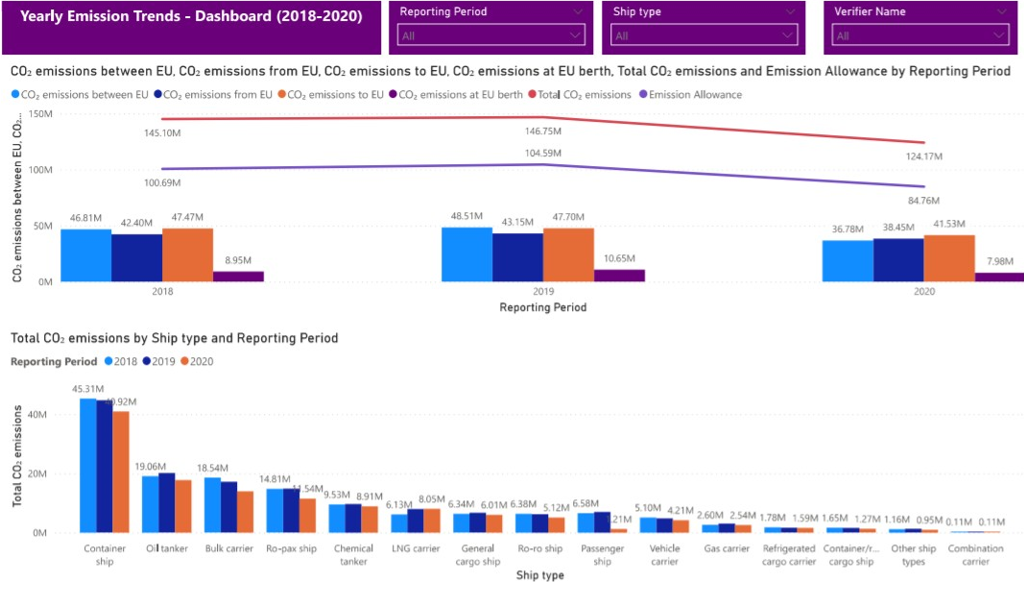EU ETS FOR MARITIME TRANSPORT
 Organizations are increasingly being called upon to account for the emissions they are directly responsible for. The European Union (EU) is combating the climate change crisis by acknowledging that “transparency is power”.
Organizations are increasingly being called upon to account for the emissions they are directly responsible for. The European Union (EU) is combating the climate change crisis by acknowledging that “transparency is power”.This began with the EU Emissions Trading System (ETS) for the aviation sector in 2010. And ten years later, the European Parliament approved draft legislation to include emissions from ships in the EU Emissions Trading System (ETS) from 1 January 2023. Simultaneously, the EU Commission launched an initiative to renew the ETS and extend its scope to the shipping industry.
Combating climate change is a common goal with differentiated responsibility. Many sectors still need to realize the power of transparency by making it central to their business success, rather than viewing it as a risk. Taking into account various sectoral trends, institutions like the EU are working towards aligning all the sector-specific emissions disclosure to ensure collective responsibility.
In the maritime transport sector, emissions today are higher than in 1990 and are expected to grow further, undermining the reductions made by other sectors to combat climate change. Therefore, an extension of EU ETS to include maritime transport is the preferred carbon pricing option expressed by stakeholders as a cost-effective contribution from sectors to the emission reductions currently not under EU ETS.
The main objective is the ambitious aim of 55% reduction in GHG emissions by 2030 compared to 1990 and further, follow a gradual and balanced trajectory towards climate neutrality by 2050. This gradual approach involves surrendering of emissions by a fixed percentage in phase-in periods as follows, rising to 100% of verified emissions reported for 2026 and each year after that:
- 20 % of verified emissions reported for 2023
- 45 % of verified emissions reported for 2024
- 70 % of verified emissions reported for 2025
- 100 % of verified emissions reported for 2026

To ensure practical application of “common but differentiated responsibility”, the EU has decided the following breakup of emissions to be surrendered as per voyage categorization:
- 100% of Emissions for voyages between EU ports
- 100% of Emissions at berth in a port under the jurisdiction of a Member State
- 50% of Emissions for Extra - EU voyages (to/from EU ports).
Shipping companies will have to report aggregated EU MRV emissions for their fleet and verified aggregated emissions will have to be submitted to their responsible administering authority before 31 March each year. To ensure accurate, reliable and transparent reporting, Verifavia Shipping is providing support by offering independent and impartial expertise to shipping companies.
The following graph, using THETIS EU MRV data, illustrates verified emissions for the last three years.

The figures in the graph represent the total emissions from the last three years. These statistics demonstrate the total CO2 emissions from the industry compared with the emissions allowances between 2018 and 2020. This comparison shows the difference between current emission levels and the targets shipping is aiming to achieve. Both of which are decreasing, but these data points need to meet.
Applying the 20% surrendering rule to the emissions for the year 2020 and using a price of EUA around 60 EUR (as of September 2021), “the financial impact for the sector would be around 1 billion EUR”. This is a significant cost to the shipping industry, therefore a transparent and streamlined approach is essential for industry success.
Recognizing the opportunity that the adoption of new green technologies presents is key to the success to the decarbonization of the shipping industry. The EU Commission is also considering the possible alignment of the EU ETS for maritime transport if an equivalent regime is proposed by the IMO, therefore any changes made now will have global benefits in due course. Accessing emission verification expertise will be essential to commercial success both now and into the long term future.
For more information, please visit our website here: EU ETS
- Samil Oberoi, EU MRV / IMO DCS Auditor
Back to all Verifavia Shipping News





